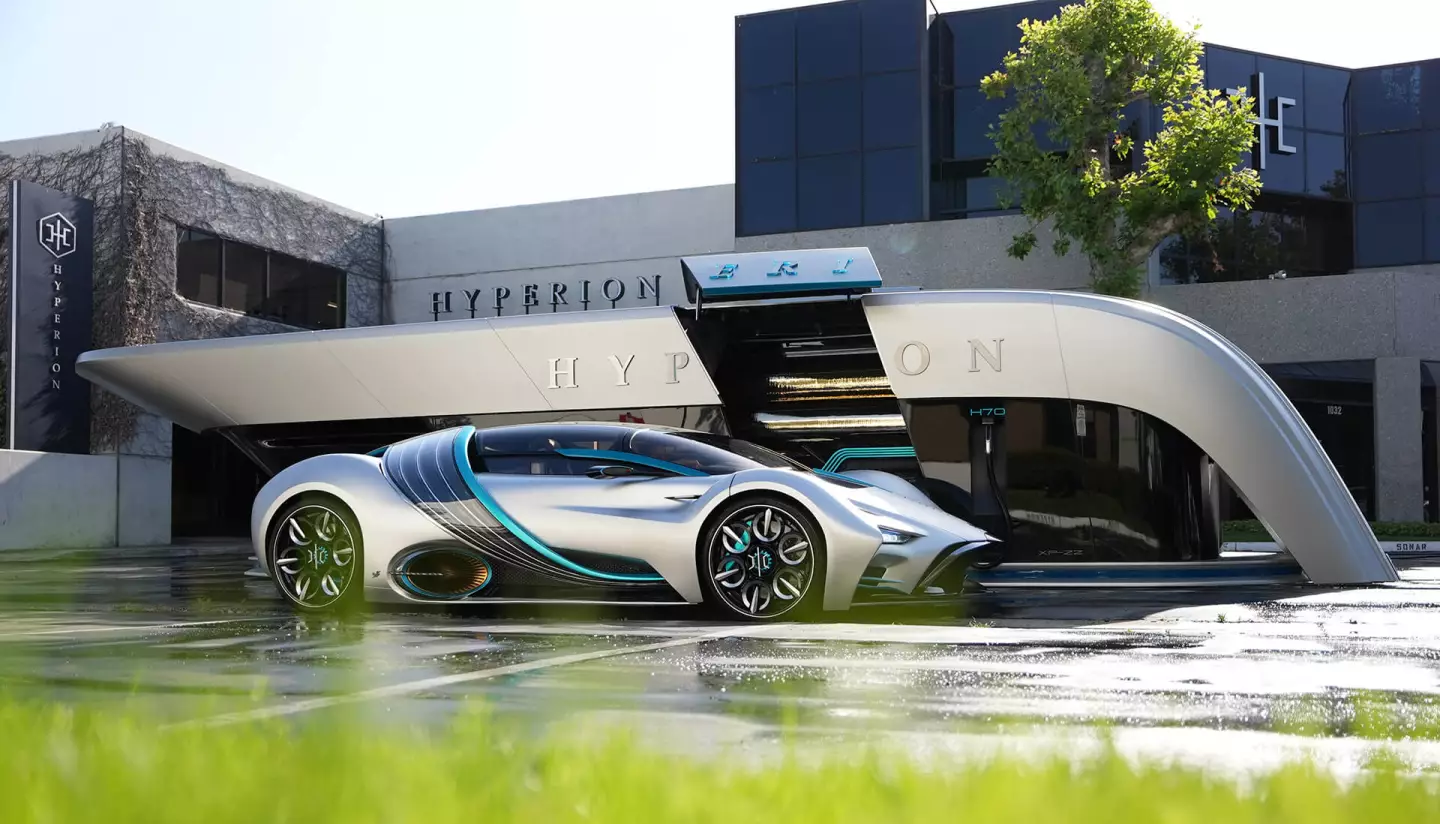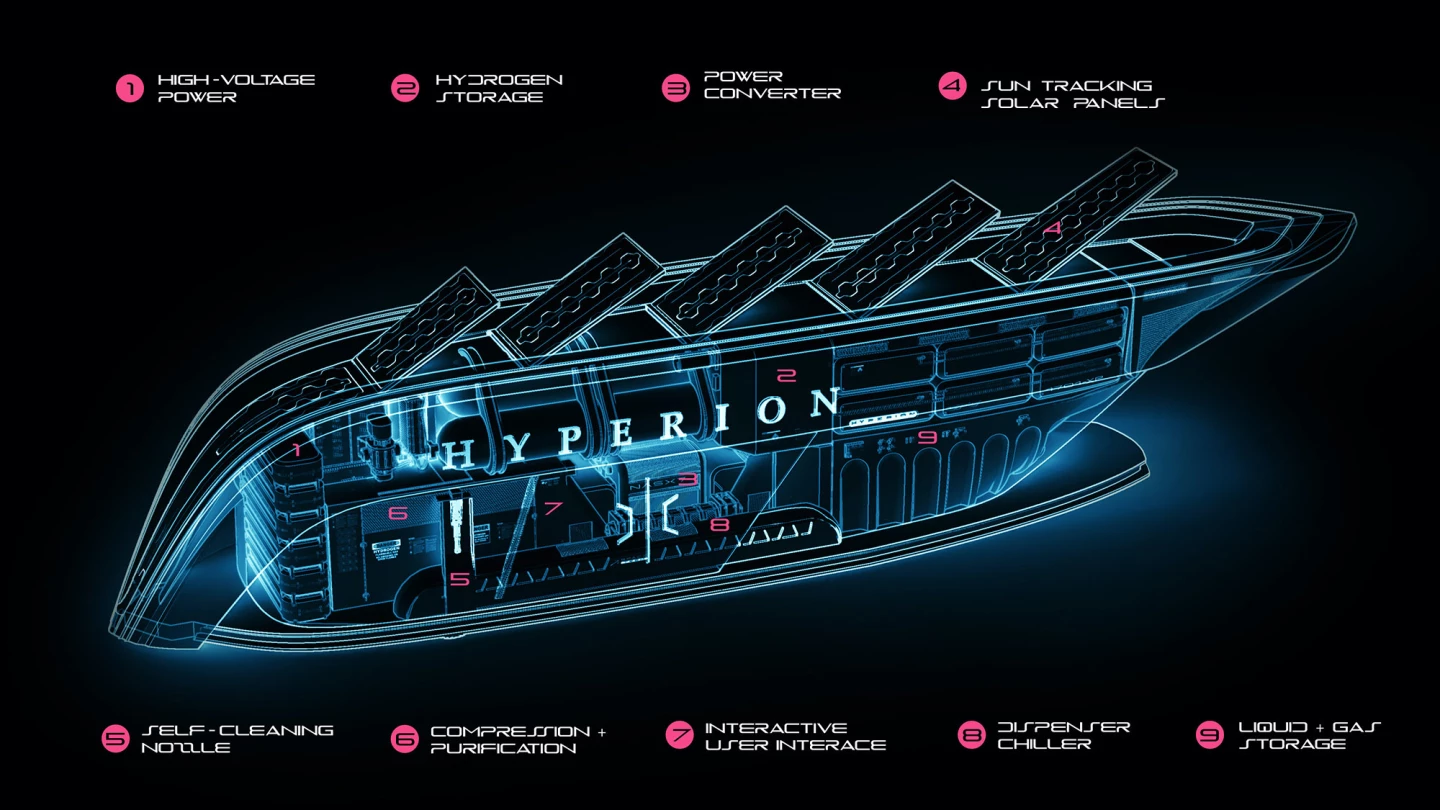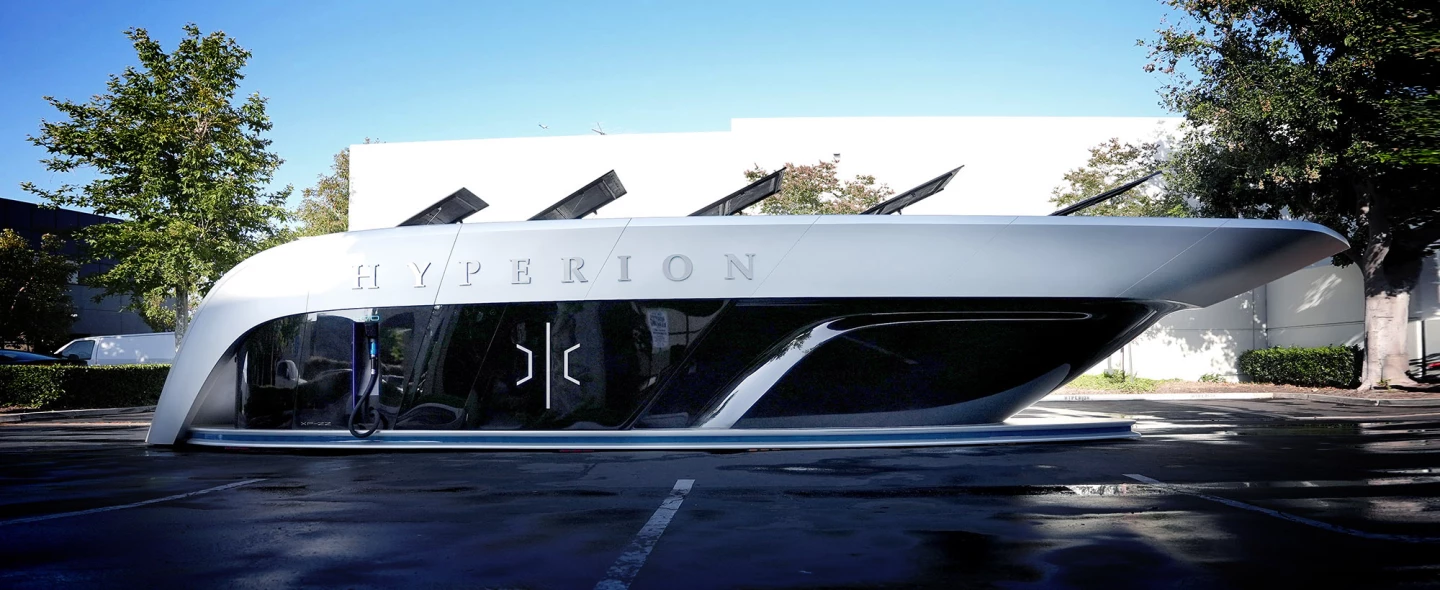Hydrogen supercar maker Hyperion isn't happy about the state of hydrogen fuel infrastructure, so it's decided to start building its own, rolling out yacht-styled mobile hydrogen stations across the United States that can generate fuel on-site.
According to IbisWorld, there are 72,296 gas stations in the United States. According to GLP Autogas, there are just 107 hydrogen fueling stations in the USA, including private fleet facilities. If you take California and Hawaii out of the picture, there are a grand total of zero. That's better than Australia, which offers you brave Nexo and Mirai drivers just three tank-filling options in the whole country – but even fuel cell vehicle proponents Japan and Korea only have 166 and 34 stations up and running, respectively.
It's bigger than a simple chicken-and-egg problem; many EV owners are delighted that they can charge up at home or work, so the idea of an EV that would send them back to the waiting arms of the gas stations is less than appealing. But hydrogen vehicles might end up playing a bigger part in the energy transition than expected; they're starting to look like the final refuge of the revhead, and besides, there's nowhere near enough lithium being produced to build all the electric cars everyone seems to expect will be sold over the coming decades.

Either way, Hyperion isn't going to sit around and cry about it. Two years after launching its XP-1, a hydrogen-powered electric supercar with a monster range over a thousand miles (~1,600 km) to a tank, the company has announced it's going into the fuel business.
Rather than getting stuck into real estate, building traditional fuel stations and setting up H2 supply chains, Hyperion has decided to build mobile fuel stops that can be towed wherever you want, and left there for however long makes sense.
As with the XP-1, Hyperion has gone out of its way to make these things look fully sick. Indeed, folk might drive past these things and assume somebody's fancy yacht's fallen off the trailer. Nope, it's a hydrogen station – indeed, one that can produce its own hydrogen, compress it, and store it.

Details are a little scant; if you want it to make hydrogen rather than just store and dispense it, you'd need to park it somewhere with access to fresh water to run through the electrolyzer. And while there are five "sun tracking solar panels" on the roof, you're gonna want a grid connection if you're expecting it to get a lot of use. You'd need a ton more solar to generate enough energy to fill up a single 100-kWh car battery every day, and even more when you factor in the inefficiencies involved with electrolysis. Ah well, the XP-1 has "articulating solar panels" on it as well, again in quantities best described as ornamental, so maybe it's a branding thing.
They don't appear to need constant staffing; customers will use touchscreens and tap-to-pay, and the fuel fillers will self-sanitize under UV light between fill-ups. They can be configured to serve as fast-charge stations for battery-electric cars as well, quick enough to get most cars from 0-80% in around 20 minutes, and Hyperion says it wants to send them out to disaster zones to serve as emergency power sources where required.
These "Hyper:Fuel Mobile Stations" will be manufactured at the company's facility in Ohio, and it'll start rolling them out "across the United States" in 2023. It plans to sit them at existing gas stations, in the car parks of big shopping malls, and in other high-traffic areas.

Hyperion sees this as a relatively fast and cheap way to get a fledgling hydrogen fueling network set up with minimal risk and investment. They won't need to buy land or sign long contracts; if they're not getting used, they can be moved somewhere else. It'll be interesting to see how they communicate these moves to customers, assuming they've begun to rely on a given station.
Check out a video below, if you're not already sick to the back teeth of watching videos about people filling up or charging their cars with really exciting music playing.
Source: Hyperion










